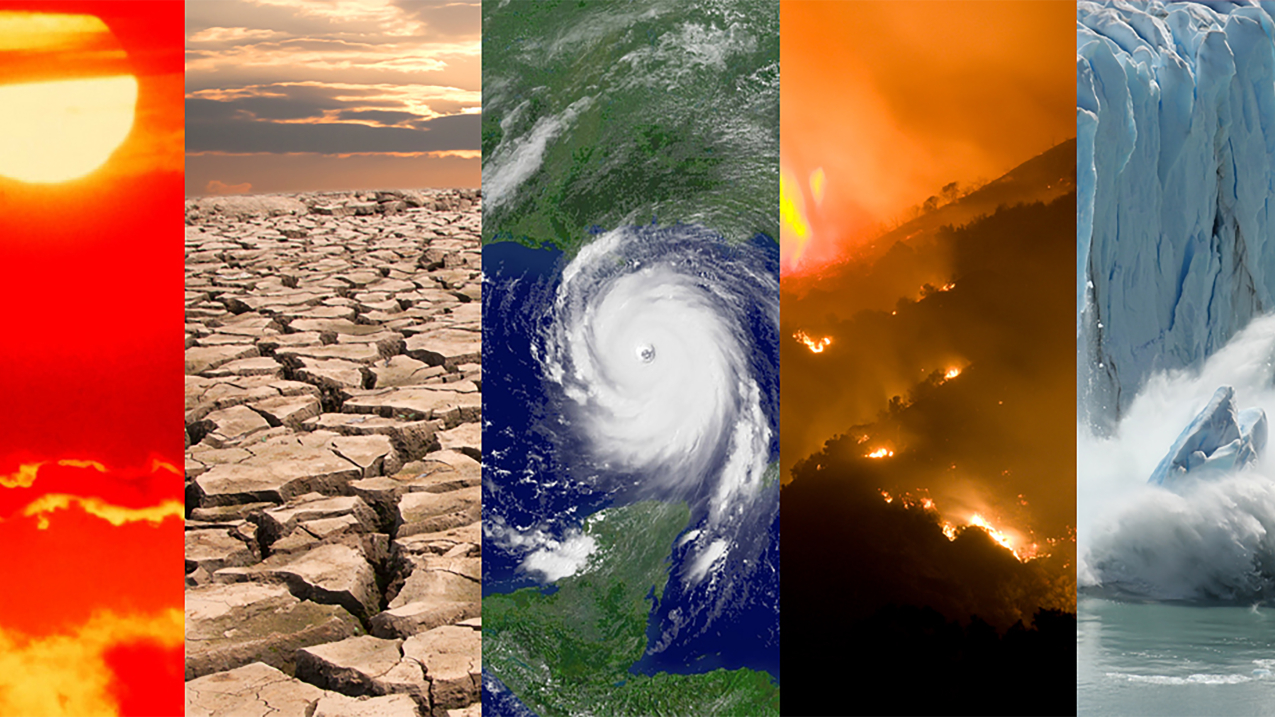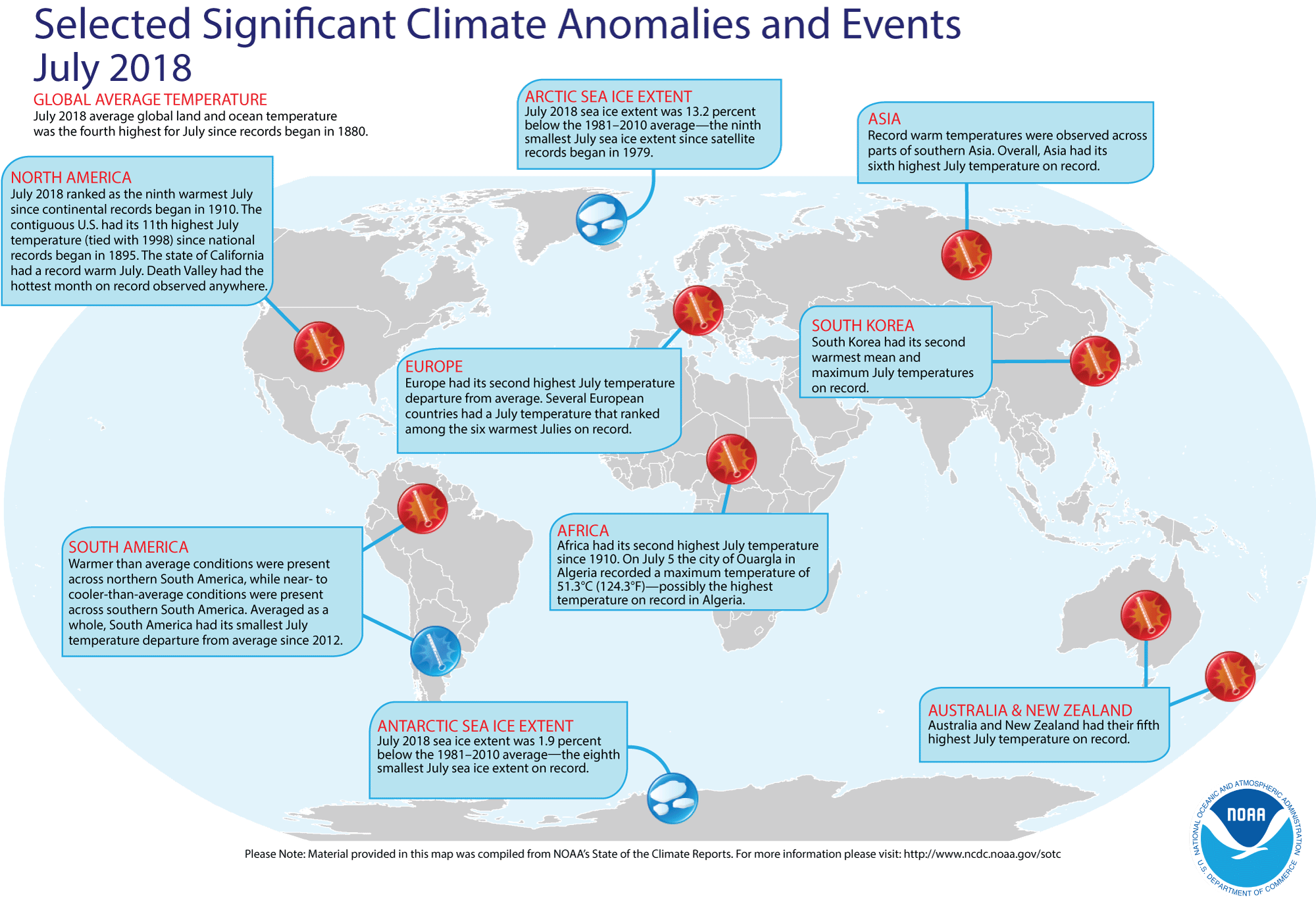Polar sea ice coverage remains smaller than normal
Polar sea ice coverage remains smaller than normal

A collage of typical climate and weather-related events: heatwaves, drought, hurricanes, wildfires and changes in sea ice coverage. (Image credit: NOAA)





